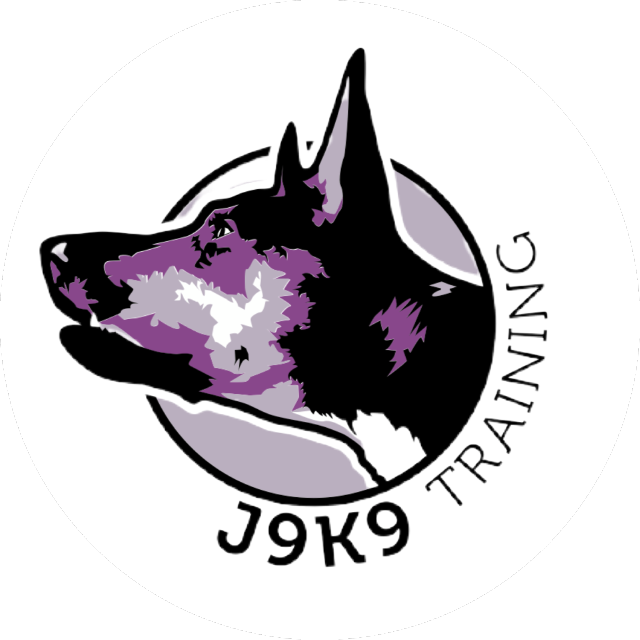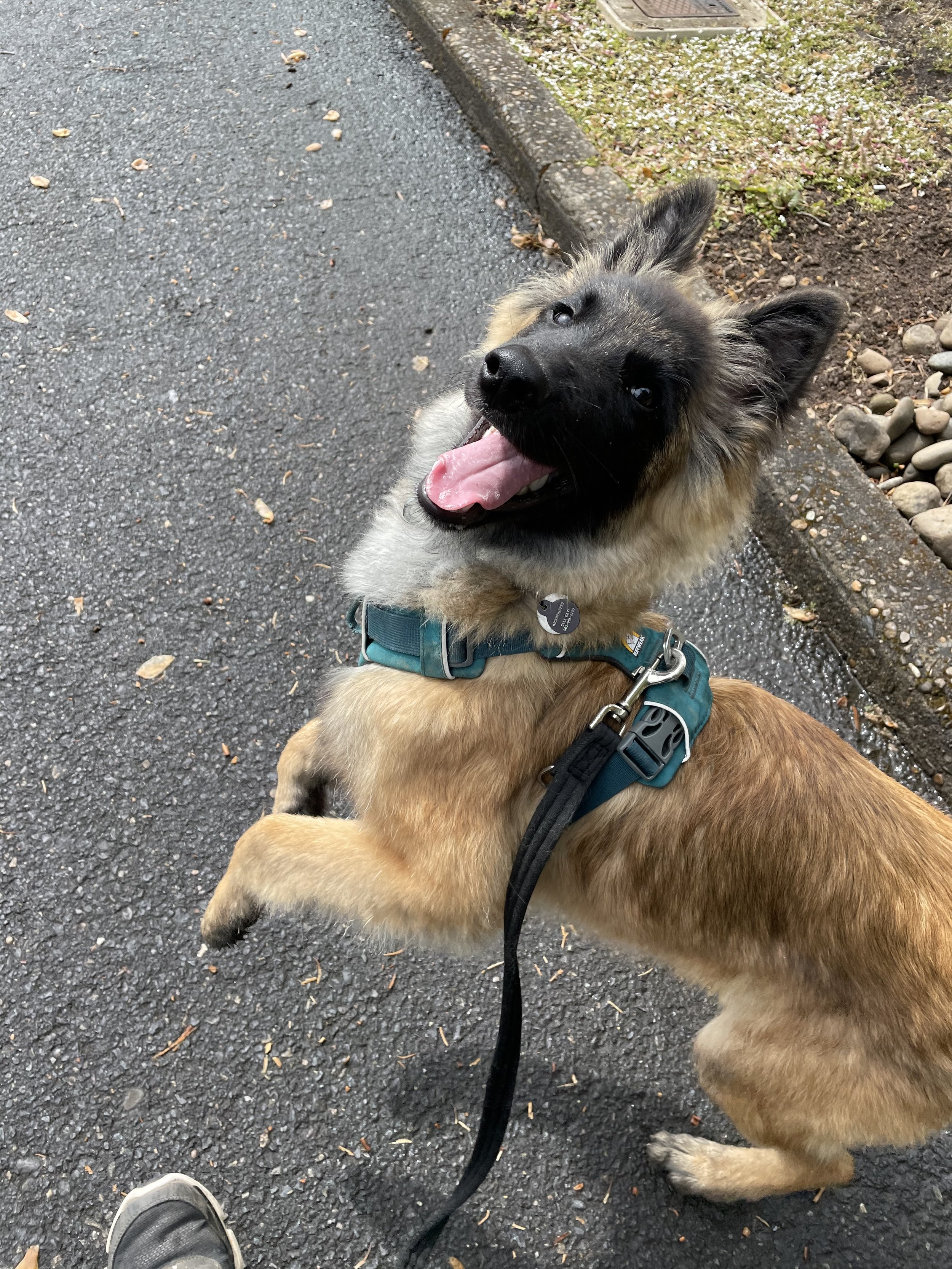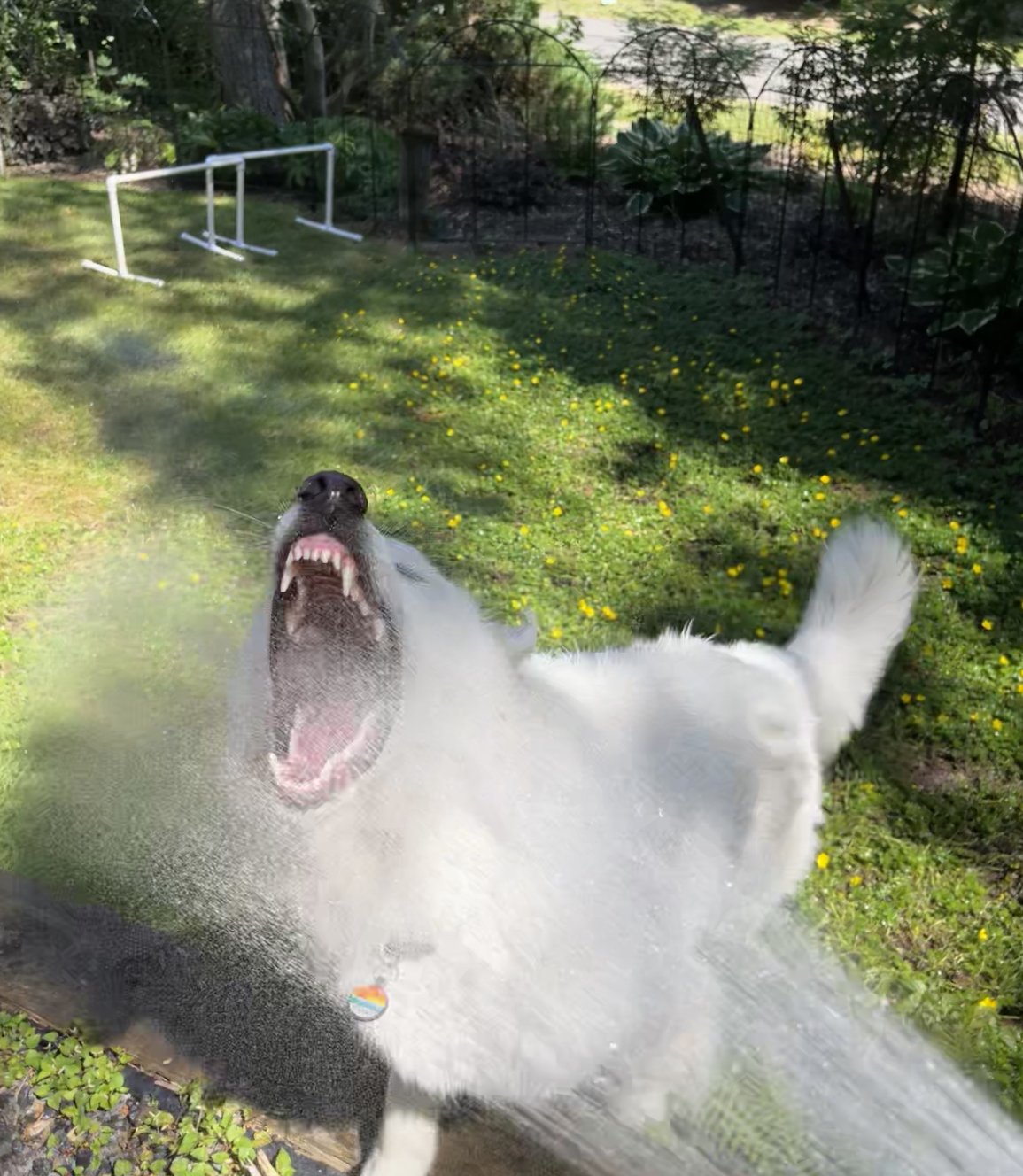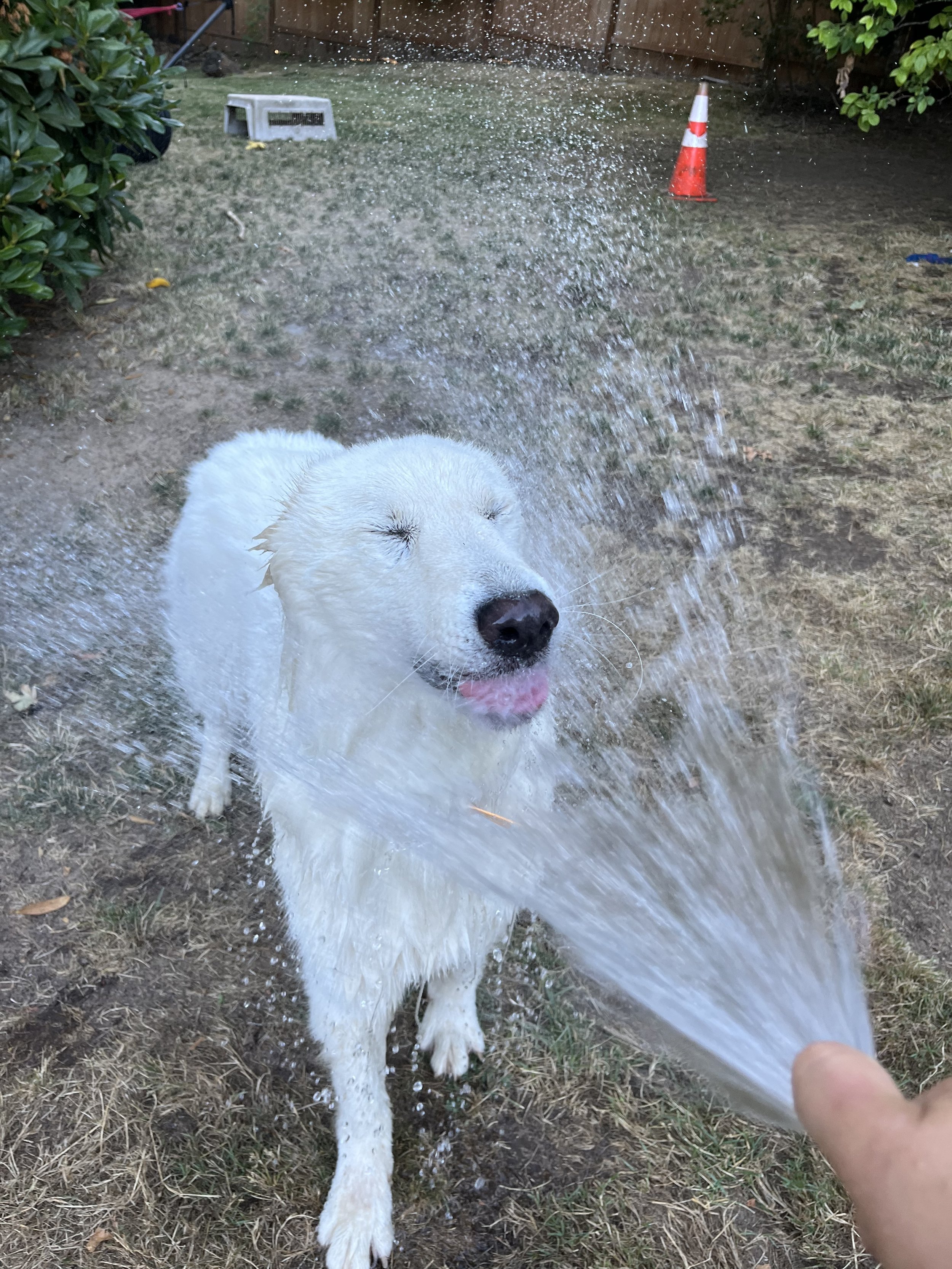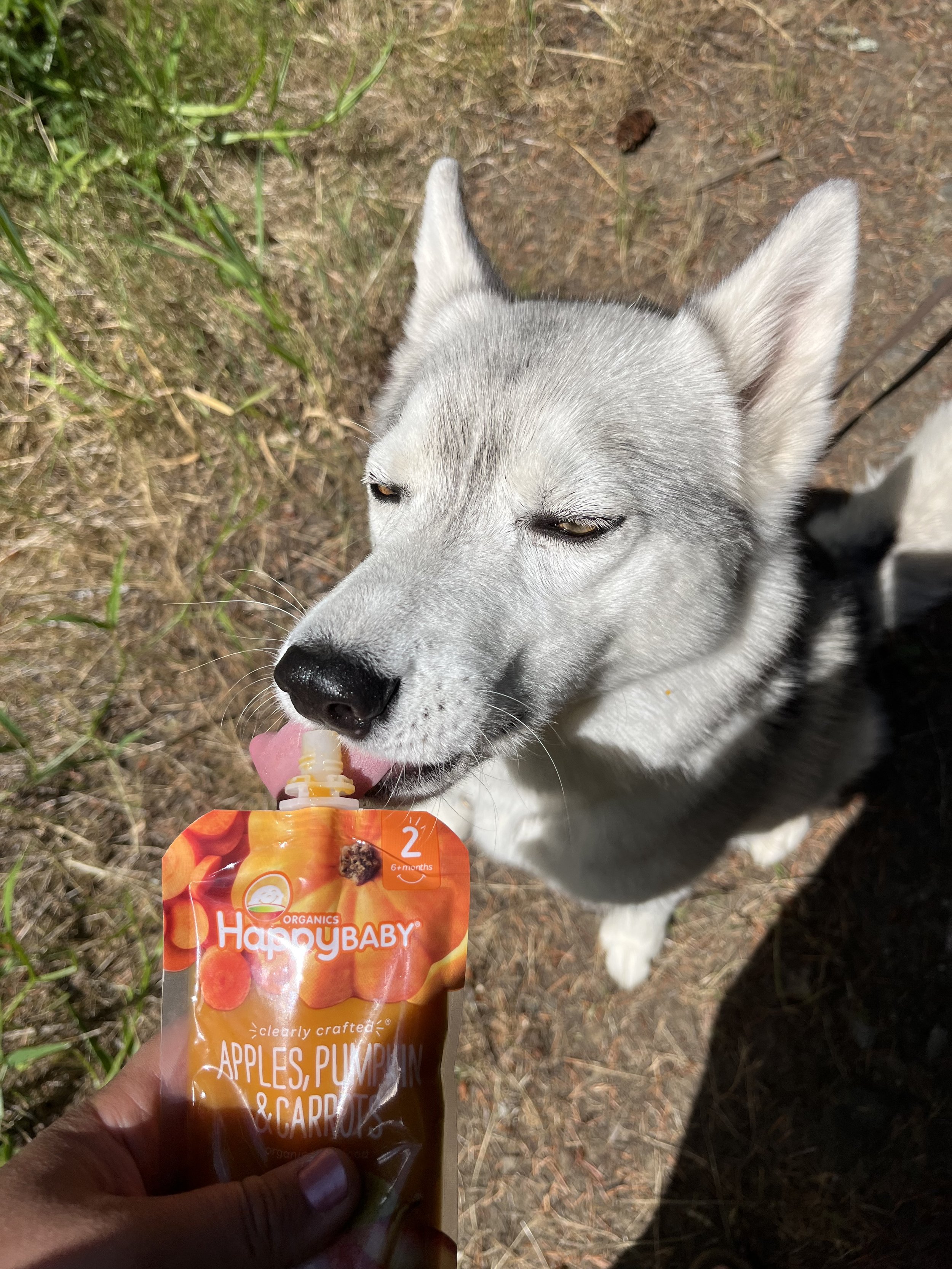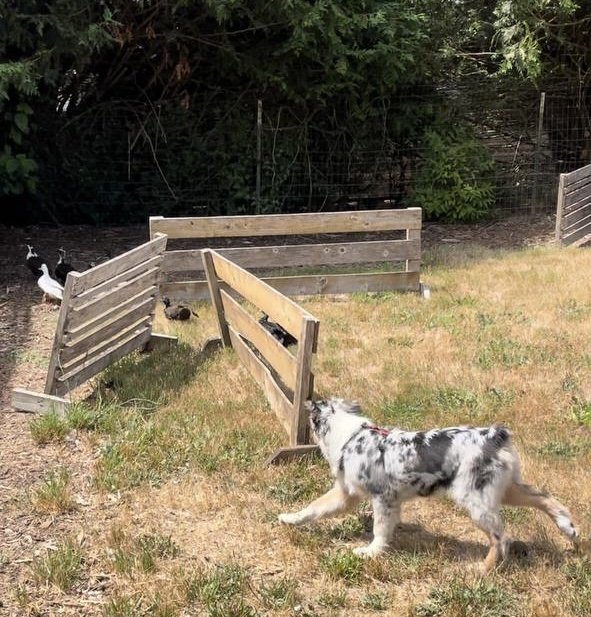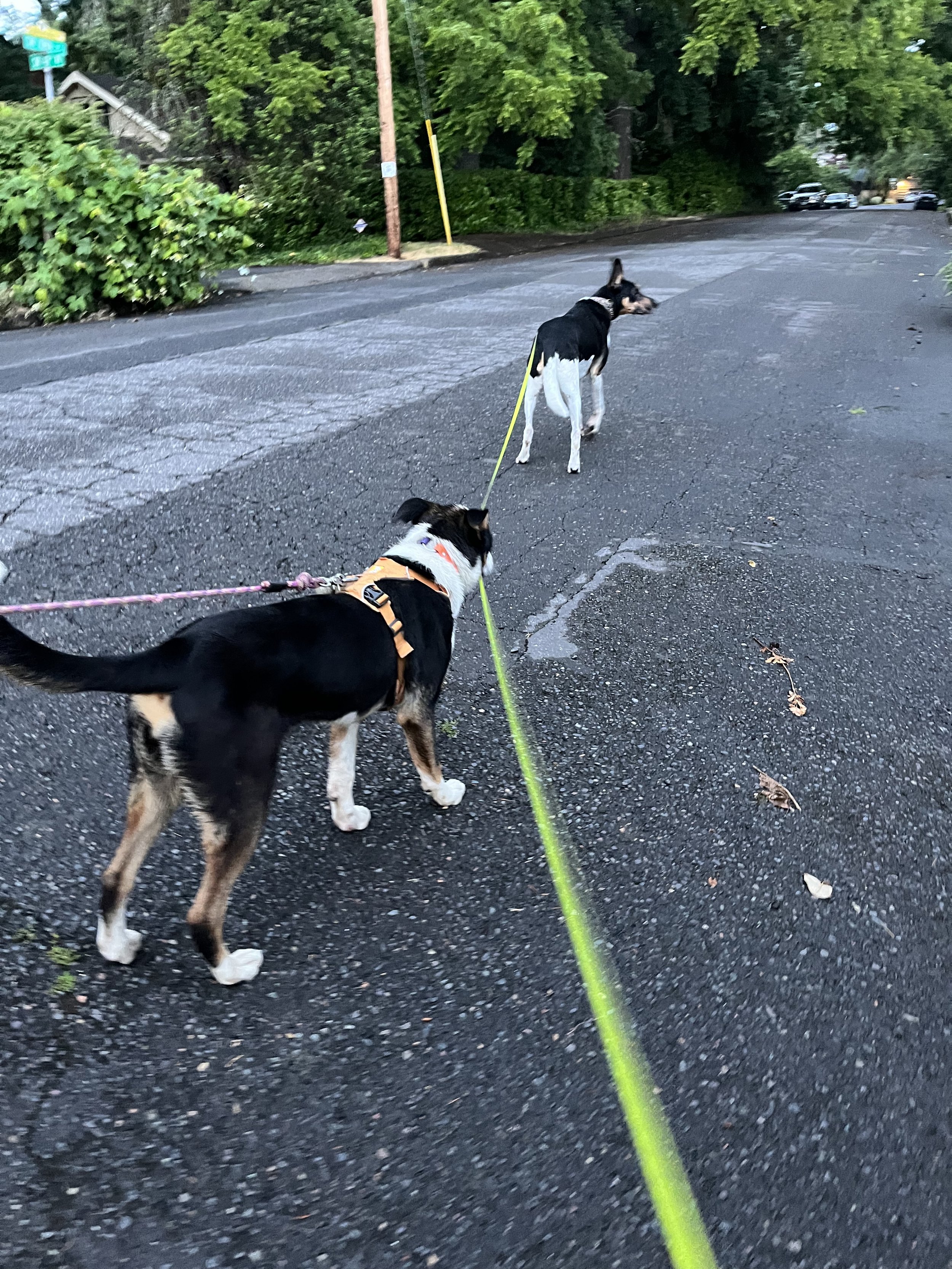Why is it important to prevent reactivity
This article is about Over Reactive dogs who desire more space from other dogs, not dogs who want to greet other dogs. Sometimes dogs are both, they want distance but they also want to go investigate. Behavior is complex. The examples used in this article are specific to on leash reactivity but can be applied more broadly to other situations with overreactivity.
Reactivity is a series of space seeking behaviors. The hypervigilance, the orienting towards, the staring, the barking, the piloerection, the high tail, the tense muscles, the furrowed brow, the forward ears, the lunging, the barking, the growling, and the unseen physiological responses are all big loud signals for the other dog to read as GO AWAY.
Our Barky Dogs who want space from dogs have learned that these behaviors result in the goal outcome: the oncoming dog gives them the space they need to feel safe. These dogs feel like their physical, emotional, or psychological safety is at risk when unknown dogs get in their space.
What is happening here? When a Barky Dog sees another dog, they start to display their space seeking signals. However, the oncoming dog gets even closer to the Barky Dog. Because of the design of our cities and trails, the dogs must head towards each other, as if jousting, to pass by. The oncoming dog puts increasing pressure on the Barky Dog as they get close and closer. The reactive dog escalates their behavior to barking and lunging and then… sweet relief! The oncoming dog goes away.
This means that negative reinforcement has taken place by the oncoming dog getting away from the Barky Dog and thus reinforcing the over reactive behaviors. The Barky Dog has learned that in order to get the space they need from the oncoming dog, they must perform all those reactive behaviors. They have also learned that the oncoming dog will apply more and more pressure by getting closer and closer, and so it’s a good idea to escalate in space seeking behaviors to make sure the oncoming dog gets the message loud and clear: GO AWAY.
Once this strategy of using behaviors associated with Reactivity to gain space becomes learned, the brain starts to automate them. These behaviors then become habitual, meaning they do not require much cognitive input as they are performed automatically in response to the trigger. They also become relatively inflexible. Habitual behavior is highly regulated by stress. Meaning in stressful times the brain opts to perform a well established habit rather than a less fluent behavior. This is an adaptive strategy to reduce poor performance in high stake scenarios.
Neural pathways are strengthened every time a behavior is performed. The completion of a habitual behavior triggers a surge of dopamine. This surge of dopamine acts as a reward for performing the behavior. Every time a Barky Dog gains space from an oncoming dog through lunging and barking, they are rewarded by the dopamine surge and the feeling of relief. This provides motivation to repeat this behavior again in the future.
Fortunately, neuroplasticity in the brain allows for new behaviors to form in place of old ones. New habits can take the place of old ones through repetition, even becoming more robust than old habits. Passing by a dog without barking can take the place of of lunging and barking when passing a dog. Think of this as having two coin jars, one for the old habit and one for the new habit. Each time one of the habits is performed, a coin is deposited into the jar. The habit jar with more coins is the habit more likely to be performed, especially in times of stress. Dogs often opt for the behavior that is easiest to perform. While we build new behaviors to replace behaviors associated with Reactivity, we want to put more coins in the new habit jar and minimal coins in the old habit jar.
To reduce reactivity, we must teach the dog that performing different, more appropriate behaviors in the presence of dogs also results in the outcome of distance. At the same time we increase the dog’s feelings of safety and comfort in proximity to other dogs on leash. In order to perform new behaviors in the presence of triggers, these behaviors have to be easy for the dog to do. The more behaviors are rehearsed the easier they become to practice.
Once the dog is fluent in the new behaviors when not in the presence of a trigger, the trigger can be introduced in small doses during controlled setups. As the dog can successfully perform their new trained behaviors in the presence of a trigger, the intensity of the trigger can be turned up. During this time it is important that the dog is rehearsing the new behaviors in response to the trigger so that these behaviors become easier and more probable for the dog to perform.
The dog needs to have minimal rehearsal of the old behaviors like lunging and barking so those are not being strengthened. As the new trained behaviors are practiced, they become more robust than the old behaviors that are no longer being rehearsed, and thus, reinforced. This is why reducing access to triggers during Reactivity Reduction training is critical to the success of the program.
Sources:
Mendelsohn, Alana I. “Creatures of Habit: The Neuroscience of Habit and Purposeful Behavior.” Biological Psychiatry, U.S. National Library of Medicine, 1 June 2019, www.ncbi.nlm.nih.gov/pmc/articles/PMC6701929/.
McLachlan, Stacey. “The Science of Habit: How to Rewire Your Brain.” Healthline, Healthline Media, 22 Dec. 2021, www.healthline.com/health/the-science-of-habit.
Wyatt , Zoe. “(PDF) The Neuroscience of Habit Formation.” Research Gate, 1 Mar. 2024, www.researchgate.net/publication/378681505_The_Neuroscience_of_Habit_Formation.
